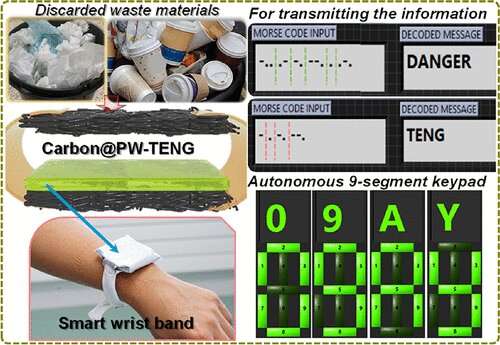Energy-harvesting wearable device made from recycled waste

Wearable devices could soon be entirely made of recycled waste materials—and powered by human movement, thanks to a new energy-harvesting device developed at the University of Surrey.
Scientists have unveiled a wrist device made from discarded paper wipes and plastic cups that runs on energy harvested by the wearer's movements. The prototype device can transmit Morse code, and the team is now focusing on plans to use this technology in smartwatches.
Dr. Bhaskar Dudem, project lead and Research Fellow at the University of Surrey's Advanced Technology Institute (ATI), said, "It won't be long until we have to ask ourselves which of the items we own are not connected to the internet. However, the current internet-of-things (IoT) revolution highlights the simple fact that our planet doesn't have the raw resources to continue to make these devices which are in such high demand.
"Our research demonstrates that there is a path to creating sustainable technology that runs on electricity powered by us, the users of that technology."
The device is "self-powered" thanks to materials that become electrically charged after they come into contact with one another. These materials (also known as Triboelectric Nanogenerators (TENGs)) use static charge to harvest energy from movement through a process called electrostatic induction.
The developers believe their energy-harvesting wearable device could be a future game-changer for the consumer, medical and security sectors.
Professor Ravi Silva, Director of ATI at the University of Surrey, said, "The core mission of the Advanced Technology Institute is to help build a world where clean energy is available to all. Our energy-harvesting technology embodies this key mission, and we stand ready to work with industry to ensure this technology reaches its full potential."
The research was published in ACS Applied Materials & Interfaces.
More information: Bhaskar Dudem et al, Wearable Triboelectric Nanogenerator from Waste Materials for Autonomous Information Transmission via Morse Code, ACS Applied Materials & Interfaces (2022). DOI: 10.1021/acsami.1c20984

















